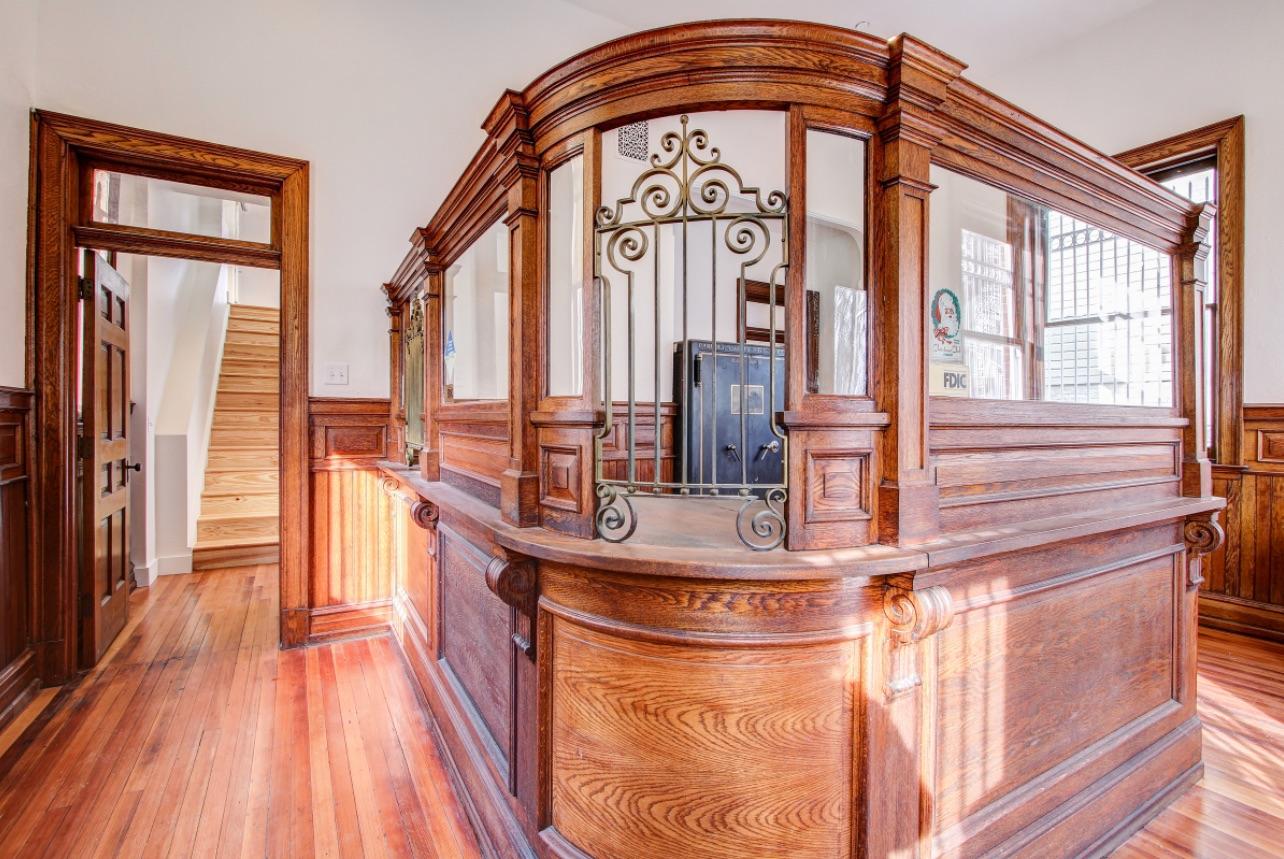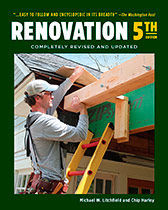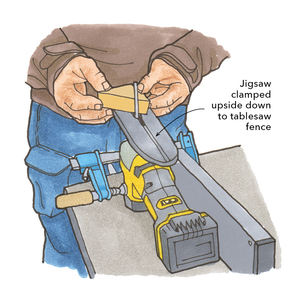Podcast 206: Doggy Doors, Advancing a Carpentry Career, and What’s Behind the Stucco?
The FHB editors talk about planning a foundation for a remote job site, getting the most from an entry-level carpentry job, and when to tear apart a stucco-clad house to search for water damage.
Follow the Fine Homebuilding Podcast on your favorite app. Subscribe now and don’t miss an episode:
 |
 |
Kiley, Rob and Patrick hear from listeners about glass bottle windows and finding period-correct architectural items. Then they take listeners questions about the best way to pour a concrete foundation that’s 50 miles from the batch plant and is there such a thing as an airtight doggy door? Other listeners ask about learning carpentry when you’re fetching tools and picking up garbage all day and should you tear apart your house to see if a water leak did any damage? Patrick shares a cool new gadget and Rob has some tips for hanging drywall by yourself without a lift. Kiley discusses architectural archeology.
Listener Feedback:
Listener feedback #1
We heard from Doug: Hi All, Since Kiley said she would be interested in bottle walls even in earth ships. Here is a photo of the bottle wall my son made when he built his earth ship. Since this wall is decorative bottles had to be cut in half so that a bottom would show on both sides. Most interior walls used aluminum cans for filler. (A lot of beer to drink.)
Related links:
- Earthship Farmstead
- Earthship Hype and Earthship Reality
- Building a Retaining Wall With Tires
- YouTube: DIY Joshua Tree Tiny House made of 7500 Bottles
 |
 |
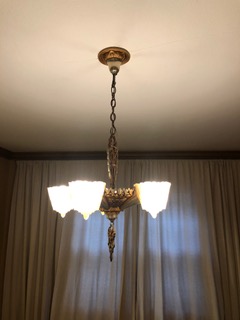 |
Listener feedback #2
Michael writes, Hi all, I have heard more than once on your podcast frustration with the difficulty finding period replacement architectural items. We have a place in Minneapolis-St. Paul: Architectural Antiques. They have frequent sales (their annual sale is on as I write) and many times stock consignment items at UNREASONABLY low prices. I know, I have a beautiful early 20th century light fixture hanging in the dining room of my 1932 Tutor Revival house for less than a comparable new fixture (they rewire as part of the price).
I have to assume there are establishments like Architectural Antiques in your neck of the woods too. Friends tell me there are two other such establishments in this metro area but have not explored them yet.
Related links:
- Architectural Antiques
- Portland Architectural Salvage
- United House Wreckers
- Directory of Architectural Salvage Stores in the U.S.
- Build a High-Performance Exterior Door
Editor Projects
Rob: Hanging drywall solo.
Kiley: Structural archeology.
Patrick: Oxy/Acetylene outfit.
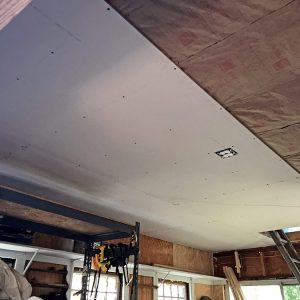 |
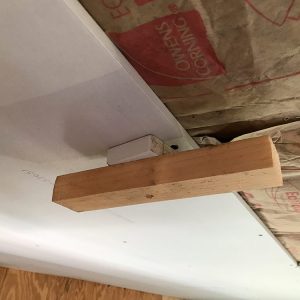 |
 |
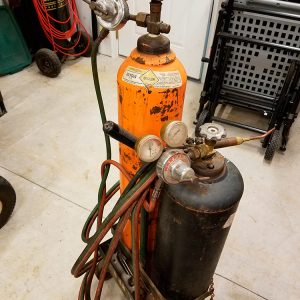 |
 |
 |
Related links:
- Temporary Cleats for Solo Drywall Hanging
- Restoring the Abiah Taylor House
- Video: Welding 101 – Fabricating a Steel Handrail
Question 1: Is it possible to create a concrete footing and foundation wall as a single monolithic pour?

Related links:
Question 2: Can you help me find an energy-efficient dog door?
Sean from South Carolina writes, Hi yinz guys! (as Patrick points out, he’s obviously from the Pittsburgh area ?)
A few years ago I moved from Pittsburgh, PA to Easley, South Carolina (outside of Greenville) in the foothills of the Blue Ridge Mountains.
The sun is absolutely brutal in the summers, but almost every morning we have been able to leave the back door open for the dogs to go in and out as they please while my wife and I get ready for work.
Now that the weather is turning so quickly this autumn, I’ve been entertaining the thought of installing a doggie door because we certainly are not leaving the door open when it’s 40° outside.
I’ve installed several doggie doors over the years for customers, but I’ve never dealt with the long-term consequences of having one myself. My question is about their thermal inefficiency and air sealing as we already live in a leaky house and I’d rather not have a large point source akin to leaving a window open.
Do they make thermally efficient and air sealed doggie doors?
Thanks in advance!
P.S.—have you ever entertained the thought of doing a joint podcast with The Modern Craftsmen guys? I’m fairly confident that would be an awesome episode.
 |
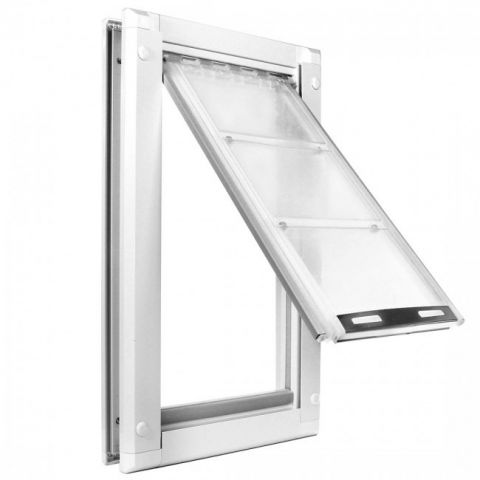 |
Related links:
Question 3: How can I build my construction skills outside of work? And, why do contractors start work so early in the morning?
Isaiah from Maine writes, Hey guys love listening to the show and unfortunately my question is not about air sealing. I am 17 and I work for a local carpenter who has his own small business. We have a crew of three guys, one of which is me. I have been working for him about 5 months now and I feel I should be progressing more than I am. I know all carpenters have to start as helpers getting tools, setting up tools and picking up trash. This is all fine but it becomes a problem when this is all I do and not any carpentry work. I also understand my bosses thinking that he can’t let me do certain things because they need to be a quality finished product. So my question is what can I do to build my skill if my job sometimes does not allow me to get that experience? A secondary question is why do contractors start so early in the morning? It seems to impose on the homeowner being there so early. I hope to someday have my own small remodeling business. Thanks for all the help in advance…Isaiah
Related links:
- Alison Carpentry Courses
- Early start, early finish is best for contractors
- The Right Way To Ask Your Boss For More Responsibility
Question 4: After finding a rotted window sill, should I open up the surrounding stucco wall, assuming there is more rot that needs to be addressed?
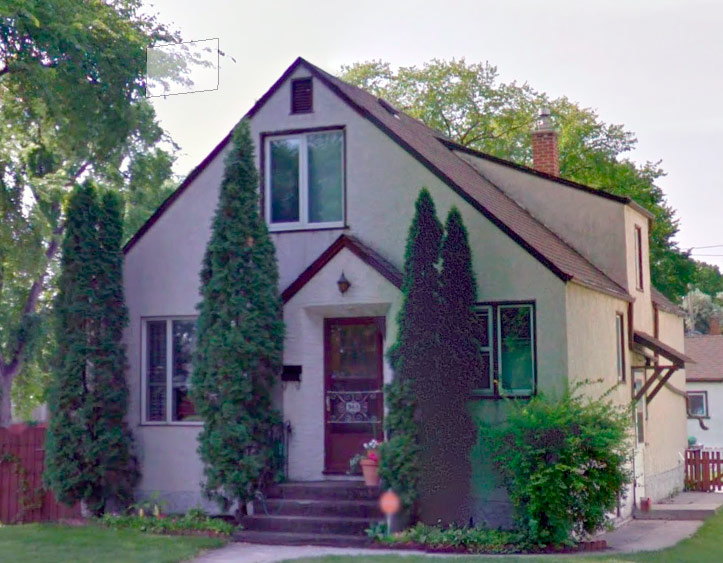
My question is about a rotted out window frame. On one especially rainy day in the Fall, we spotted a drip above the front door. The door looks perfectly fine and well-sealed, so I climbed up to check the 2nd level window directly above, and discovered the window sill was very rotten. I started pulling off rotten bits and I soon got to the point of no return. I removed PVC replacement window, replaced the sill (prepainted new fir), seal up the frame as best I could with Ice and Water Shield flashing tape, and reinstalled PVC trim.
This all happened on very short notice. Because of a severe snowstorm forecast for later in the week, I called my brother and we made the repairs in the dark the night before the storm. It is storming as I write this.
I think the operation was a success. However, I am concerned about the potential rot in the wall below the window. We removed as much rotted material as we could access, including some of the original sheathing boards behind the stucco. There didn’t seem to be structural deficiencies or visible black mold (or smell), but it clearly had been rotting for quite some time. I suspect that there was enough of a leak to go unnoticed and cause rot for a long time, but rarely enough to run all the way to the lower level and be noticed. The exterior stucco and interior plaster both look intact, with no signs of water damage, but should I be concerned enough to open up the wall under the window and investigate? I already have a major kitchen remodel and some basement insulation projects coming up soon, and a partner who likes the renovation process considerably less than I do, and I’d like to avoid another project in our bedroom if possible.
Would you be satisfied with good enough if this were your house? I should maybe add that we’d like to have the stucco painted in the not-too-distant future.
Any advice is welcome! Thanks!
Related Links:
And finally…
- Tapplock
- Bank turned house:
If you have any questions you would like us to dig into for a future show, shoot an email our way: [email protected].
If we use your question we’ll send you a FHB Podcast sticker!
 #KeepCraftAlive
#KeepCraftAlive
KeepCraftAlive hats help celebrate the value of true craftsmanship–plus 50% of all proceeds from every hat sold go to the #KeepCraftAlive Scholarship Fund, supported by Fine Homebuilding and SkillsUSA.
Buy a #KeepCraftAlive hat or t-shirt
This episode of the podcast is brought to you by Danner
We’d like to thank Danner, who sponsors this podcast because they believe in us. They believe in quality, and craftsmanship…but more than anything, they believe in the power of following your own path.
For more than 80 years Danner has made boots for those who have a trail to blaze. Boots like the Bull Run. Hand built in the USA with durable, full-grain leather uppers, and stitch-down construction for strength and stability. The Bull Run is built in a timeless design for both men and women with unmatched quality and durability that stands the test of time. The Bull Run boot by Danner offers iconic style and legendary craftsmanship for those who earn their independence.
You can find yours at Danner.com.
Fine Homebuilding podcast listeners can now get 20% off anything in the Taunton store, including Renovation, now in its 5th edition. This home repair and remodeling bible describes in unvarnished detail best practice for hundreds of renovation projects. Also check out the Code Check series. These sturdy, spiral bound reference books will help you navigate the International Residential Code, The National Electric Code and the Universal Plumbing Code. Use the discount code FHBPODCAST to take advantage of this special offer.
We hope you will take advantage of a great offer for our podcast listeners: A special 20% off the discounted rate to subscribe to the Fine Homebuilding print magazine. That link goes to finehomebuilding.com/podoffer.
The show is driven by our listeners, so please subscribe and rate us on iTunes or Google Play, and if you have any questions you would like us to dig into for a future show, shoot an email our way: [email protected]. Also, be sure to follow Justin Fink and Fine Homebuilding on Instagram, and “like” the magazine on Facebook. Note that you can watch the show above, or on YouTube at the Fine Homebuilding YouTube Channel.
The Fine Homebuilding Podcast embodies Fine Homebuilding magazine’s commitment to the preservation of craftsmanship and the advancement of home performance in residential construction. The show is an informal but vigorous conversation about the techniques and principles that allow listeners to master their design and building challenges.
Other related links
-
- All FHB podcast show notes: FineHomebuilding.com/podcast.
- #KeepCraftAlive T-shirts and hats support scholarships for building trades students. So order some gear at KeepCraftAlive.org.
- The direct link to the online store is here.
